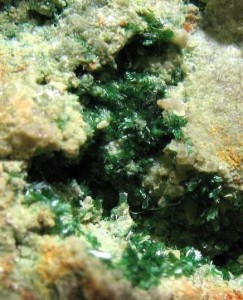
ASU’s Biodesign Institute kicked off the Fall 2013 semester by hosting an interesting lecture featuring the research findings of Assistant Professor Candace K. Chan of ASU’s School for Engineering of Matter, Transport, and Energy (SEMTE).
Chan’s research team has been interested in designing and studying the properties of nanostructured materials for applications including electrochemical energy storage, photoelectrochemical solar energy conversion, and renewable hydrogen generation. This lecture hit on the team’s recent findings that Libethenite, a rare copper mineral naturally found in Arizona, has been found to absorb light and distribute the energy. Chan explained that her team did a photocurrent test in which they applied a voltage to see what kind of photo-activity existed within the mineral. They worked with a variety of different elements and saw an increase of activity levels when reacting with Libethenite. This is important to the field of solar energy because Libethenite could potentially serve as an n-type semiconductor that can be used inside a photovoltaic (PV) solar cell. With more research and development, Lebethenite, serving as an n-type semiconductor, could create a greater efficiency of converting light energy into electric energy in solar cells. Through the higher level of efficiency in artificial photosynthesis, solar fuel can then be produced and stored for later usage which is a more sustainable and environmentally friendly option from traditional fossil fuels. For more information on Candace K. Chan’s research click here.
Solar to fuel research and development is an important initiative at ASU LightWorks. The initiative aims to engage physical, social, and engineering sciences to further develop solar to fuels technology in order to fulfill its role as an alternative to fueling transportation systems. Solar to fuels technology is a newer area of research and needs to be further developed in order to compete economically with fossil fuels. In time, solar to fuels technology could fill an important role in the area of renewable fuel sources. Continuing to develop renewable fuel sources that not only reduce carbon dioxide, but also meet the nation’s energy demand is an integral way to creating a more sustainable future.
Written by Gabrielle Olson, ASU LightWorks
Photo retrieved from Chan Lab @ ASU website